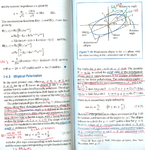Alan0354
Full Member level 4
In plane wave elliptical polarization, the book said if the Ellipticity angle is possitive, it is a Left Hand Circular polarization(LHC). If Ellipticity angle is negative, it is Right Hand Circular polarization(RHC).
My question is how can Ellipticity angle be negative?
https://en.wikipedia.org/wiki/Polarization_%28waves%29
Can anyone show a picture of negative Ellipticity angle?
Thanks
My question is how can Ellipticity angle be negative?
https://en.wikipedia.org/wiki/Polarization_%28waves%29
Can anyone show a picture of negative Ellipticity angle?
Thanks
